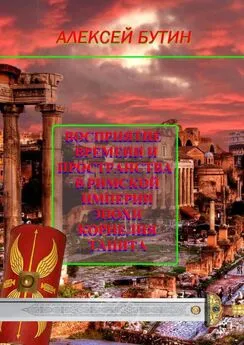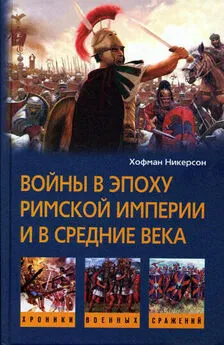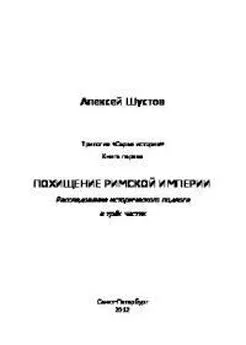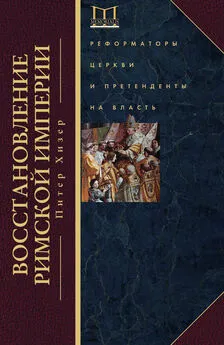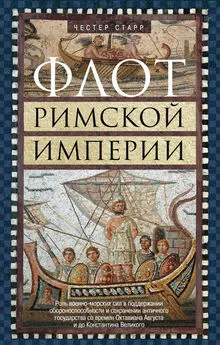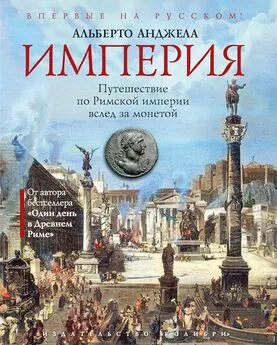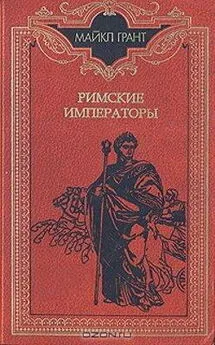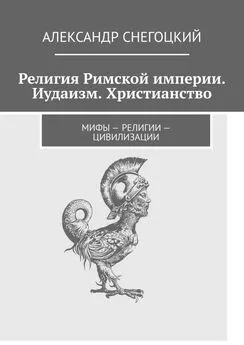Алексей Бутин - Восприятие времени и пространства в Римской империи эпохи Корнелия Тацита
- Название:Восприятие времени и пространства в Римской империи эпохи Корнелия Тацита
- Автор:
- Жанр:
- Издательство:неизвестно
- Год:неизвестен
- ISBN:9785449699145
- Рейтинг:
- Избранное:Добавить в избранное
-
Отзывы:
-
Ваша оценка:
Алексей Бутин - Восприятие времени и пространства в Римской империи эпохи Корнелия Тацита краткое содержание
Восприятие времени и пространства в Римской империи эпохи Корнелия Тацита - читать онлайн бесплатно ознакомительный отрывок
Интервал:
Закладка:
Восприятие времени и пространства в Римской империи эпохи Корнелия Тацита
Алексей Андреевич Бутин
© Алексей Андреевич Бутин, 2019
ISBN 978-5-4496-9914-5
Создано в интеллектуальной издательской системе Ridero
АЛЕКСЕЙ БУТИН
ВОСПРИЯТИЕ ВРЕМЕНИ И ПРОСТРАНСТВА В РИМСКОЙ ИМПЕРИИ ВО ВРЕМЕНА КОРНЕЛИЯ ТАЦИТА
яРОСЛАВЛЬ
2019
ALEXEY BUTIN
The perception of time and space in the Roman Empire at the time of Cornelius Tacitus
RUSSIA, YAROSLAVL
2019
Оглавление
SUMMARY ___ 12
Глава I.
Введение. Тацит и его эпоха ___ 18
1. Время и пространство в научной традиции
2. Эпоха, жизнь и творчество Тацита: российские и зарубежные исследования
3. Эпоха Тацита: историко-культурный контекст времени ранней империи
Глава II.
Хронотоп принципата: теоретико-методологическое обоснование концепта ___ 61
Глава III.
Время и пространство в картине мира римлян I – начала II в. Макромир ___ 83
1. Образы прошлого, настоящего и будущего в картине мира римлян
2. Проблема направление времени
3. Дихотомия «центр – периферия»
4. Вертикаль мира: верхний – средний – нижний «миры»
5. Дихотомия «мир природы – римский социум»
Глава IV.
Время и пространство как координаты социальной реальности раннего принципата __ 148
1. Священное время и священное пространство. Профанное
2. Время и пространство войны и мира
3. Время и пространство публичной и частной жизни
4. Индивидуальное время и индивидуальное пространство. Границы индивидуального. Родовое и семейное
Глава V.
Время и пространство в историософии Тацита __ 195
1. Образы прошлого, настоящего и будущего
2. Мотив «порчи нравов»
3. Образы пространства
Заключение ____ 245
Глоссарий ____ 254
Библиографический список ____ 263
Приложение 1 ___ 280
Концепт «время». «Историческое время» в Древнем Риме: историография
Приложение 2 ___ 292
Актуализация концептов «время» и «пространство» в структуре мифологического мышления в отечественной литературе
Приложение 3 ___ 328
Проблема методологии изучения ментальности в сознании человека доиндустриальной эпохи
Приложение 4 ___ 339
Дихотомия мифологического и обыденно-рационального в религиозных воззрениях римлян
Table of contents
SUMMARY ____ 12
Chapter I.
Introduction. Tacitus and its era ___ 18
1. Time and space in the scientific tradition
2. The era of the life and works of Tacitus: Russian and European Studies
3. The era of Tacitus: the historical and cultural context of the time of the early empire
Chapter II
Chronotopus of Principatus: Theoretical and Methodological Substantiation of the Concept ___ 61
Chapter III
Time and space in the picture of the world of the Romans I – the beginning of the II century AD. ___ 83
1. Images of the past, present and future in the picture of the world of the Romans
2. The problem is the direction of time
3. The «center-periphery» dichotomy
4. The vertical of the world: upper – middle – lower «worlds»
5. The dichotomy «the world of nature – the Roman society»
Chapter IV
Time and space as the coordinates of the social reality of the early principatus __ 148
1. Sacred time and sacred space. Everyday time and space
2. The time and space of war and peace
3. Time and space of public and private life
4. Individual time and individual space. The boundaries of individual time. Family and family time and space
Chapter V.
Time and space in the historical philosophy of Tacitus _ 195
1. Images of past, present and future
2. The motive of «moral damage»
3. Images of terrestrial space
Conclusion ___ 245
Glossary ___ 254
Bibliographic list __ 263
Attachment 1 ___ 280
The concept of «time.» «Historical Time» in Ancient Rome: Historiography
Attachment 2 ___ 292
Updating the concepts of «time» and «space» in the structure of mythological thinking in the Russian scientific literature
Attachment 3 ___ 328
The problem of the methodology of studying mentality in the human mind of the pre-industrial era
Attachment 4 ___ 339
The dichotomy of the mythological and ordinary-rational in the religious beliefs of the Romans
summary
In this study, an attempt was made to reconstruct the ideas of the ancient Romans of the early principle principle on time and space based on the works of the classic of ancient historical literature Cornelius Tacitus. His writings were often used by scholars in conducting various historical studies, but they were rarely used to study the mental characteristics of ancient Romans, while the study of values and concepts constitutes the paradigm of modern humanitarian knowledge. In addition, of particular interest is the application to such traditional sources as the written heritage of ancient intellectuals, the approaches of the «new» cultural history – one of the most dynamically developing areas of modern historical science.
The structure of time in the understanding of man of the modern information society is expressed in a linear sequence of past, present and future, which is characterized by uniformity, unidirectionality, continuity. However, time in its mythological vision is characterized by qualitative conditionality of perception, heterogeneity, unevenness, discreteness, eventful fullness and concreteness, perception in close connection with space. Space, in turn, being an abstract and infinite continuum for a modern person, for a person with a mythological type of thinking, possessed the properties of discreteness, subject fullness, limitation, isolation, qualitative heterogeneity.
These attributions of time and space are clearly presented in the picture of the world of the Romans I – the beginning of the II. In our opinion, the concept of « Chronotopus of Principatus» can be applied to this epoch – a system of spatial-temporal coordinates of the political, social, cultural, ideological levels of existence of the Romans of the early Empire era, welded with the idea of «Pax Romana». With the help of this term, our observations on the inseparable unity of time and space, their inseparability from each other are most accurately expressed.
Emphasizing the integrity of the mythological type of thinking of the Romans and the integrity of the picture of the world inherent in their consciousness, we did not leave without analysis the main ontological parameters of the existence of time and space, specifically developed by the consciousness of the inhabitants of the Eternal City. The direction of the flow of time in the collective understanding of the ancient Romans was cyclical. In the heritage of Tacitus, we found cycles of different lengths, the shortest of which was equal to one day. Also among the manifestations of cyclicity can be called characteristic for the descendants of Romulus orientation in time in connection with the consulate, the annual oath to the emperor, the festive culture and similar phenomena repeated with enviable regularity.
It is impossible to deny the existence in the minds of the Romans of the idealization of the past, the psychological orientation primarily on the mores and traditions of the ancestors, the ideals of the Republic. The Romans, who are not capable of changing the present, were much more concerned about the future, which is why there were many ways to gain it in their arsenal.
In the era of the Empire began the process of politicization (nationalization) of time. This is evident from the fact that the calendar years were designated by the names of the consuls. The princeps and the senate claimed the management of the qualitative characteristics of the time, and through this the subordination of the psychological state of the subjects.
The proximity of the Roman understanding of time to modern is the presence of a temporal orientation to cosmic phenomena. The essential difference, however, was that the Romans deified and animated the world of nature, perceived themselves inseparably from it, therefore the world of nature had a strong influence on the motives and patterns of their behavior. The desire to make at least partially controlled unpredictable natural force made the Romans respect the predictions, signs, dreams, and also introduce new means of influencing the space of nature – measures designed to create the illusion of managing space time.
Inherent in the mentality of the Romans, curiosity and practicality prompted them to be interested in the world around them. The earth was represented to them by a circle that washes the Ocean on all sides. Rome was considered the sacred center of the earthly circle, while the periphery of the world, which was in opposition to the center, was perceived as an alien, dangerous space and was inhabited by folk fantasy as fairy-tale creatures. The priesthood of Rome-city was given, above all, by its aegis – the Capitoline Triad of the Gods, which was the leading channel of communication between the heavenly and the earthly levels of the world. The sky and the world of wildlife, therefore, were under the vigilant control of the Romans.
Читать дальшеИнтервал:
Закладка:
